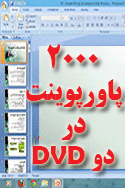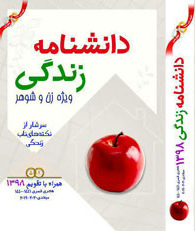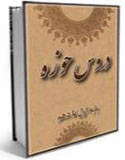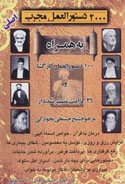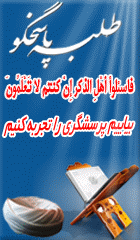'Tahdhib al-Ahkam' and 'Al-Istibsar' by Al-Tusi
The Author
Shaikh al-ta'ifa (the teacher of the community) Abu Ja'far Muhammad b. al-Hasan b. 'Ali b. al-Hasan al-Tusi was born in Tus in Iran in the year 385 of the Islamic era. His career marks the climax of a very great period in Shi'ite Islamic scholarship and learning. It was during this period that Shi'ite scholars were without rivals in the Islamic world. Al-Shaikh al-Tusi's teachers included al-Shaikh al-Mufid, and the two brothers, members of Ahl al-bait and both outstanding scholars, al-Sharif al-Murtada and al-Sharif al-Radi.
This period of great public Shi'ite Islamic scholarship had begun with al-Kulaini (died 328/9 A.H.), whose collection of traditions, al-Kafi, is the first of the four major works of Shi'ite Islamic traditions.[1] It was then continued with al-Shaikh al-Saduq lbn Babawaih (died 381 A.H.); his great collection of traditions, Man la yahduruh al-faqih, is the second of the major works of traditions.[2] The remaining two major collections of traditions were compiled by al-Shaikh al-Tusi and they are Tahdhib al-ahkam fi sharh al-munqi' a[3] and al-Istibsar fima 'khtalaf min al-akhbar.[4]
Al-Shaikh al-Tusi grew up in Tus and began his studies there. In 408 A.H. he left Tus to study in Baghdad. There he first studied under al-Shaikh al-Mufid, who died in 413 A.H. Leadership of the Shi'ite scholars then fell to al-Sharif al-Murtada. The latter remained in this position until his death in 436 A.H. During this time al-Shaikh al-Tusi was closely associated with al-Sharif al-Murtada. His vast scholarship and learning made him a natural successor of al-Sharif al-Murtada as the leading spokesman of Shi'ite Islam. So impressive was his learning that the Abbasid caliph, al-Qadir bi-'llah, attended his lectures and sought to honour him.
In the closing years of al-Shaikh al-Tusi's life the political situation in Baghdad and the domains of the Abbasid caliphate was in turmoil. The Saljuqids fiercely anti-Shi'ite, were gaining commanding power in the centre of the Islamic Empire at the expense of the Buyids who had always seemed tolerant to Shi'ite views. In 447 Tughril-bek the leaders of the Saljuqids entered Baghdad. At this time many of the 'ulama' in Baghdad, both Sunni and Shi'ite were killed. The house of al-Shaikh al-Tusi was burnt down, as were his books and the works he had written in Baghdad, together with important libraries of Shi'ite hooks. Fanaticism against the Shi'a was great.
Al-Shaikh al-Tusi, seeing the danger of remaining in Baghdad, left and went to al-Najaf. Al-Najaf, the city where 'Ali b. Abi Talib had been martyred, was already a very important city in the hearts of Shi'ite Muslims. However, it was al-Shaikh al-Tusi's arrival which was to give that city the impetus to become the leading centre of Shi'ite scholarship. This is a role, which it has maintained down to the present day.
Al-Shaikh al-Tusi died in al-Najaf in 460 A.H. His body was buried in a house there, which was made into a mosque as he had enjoined in his will. Even today his grave is a place of visitation in al-Najaf. Al-Tusi was succeeded by his son al-Hasan, who was known as al-Mufid al-Thani, and was himself an outstanding scholar.[5]
The learning of al-Shaikh al-Tusi extended over the whole of Islamic studies. He was a learned traditionist, whose two compilations will be discussed below; but he was not only a traditionist, he was also an authoritative jurist, who could interpret traditions to meet the needs of jurisprudence, and many of his works on jurisprudence and the principles of jurisprudence still survive, in particular al-Mabsut and al-Nihaya. In addition, he was the leading Shi'ite theologian of his time. As well as writing works of a general theological nature, he also wrote specific works on individual topics. On the Imamate, he wrote Talkhis al-Shafi, which was based on al-Sharif al-Murtada's al-Shafi fi 'l-imama. He wrote a work on al-Ghaiba, the occultation of the 12th Imam. As a traditionist, he naturally had an interest in the men who related traditions, in his Kitab al-rijal, he tries to list most of the important Shi'ites. His Fihrist is an important work of Shi'ite bibliography. In it he lists many of the works of early Shi'ite writers and sometimes gives an account of their writers and the contents of the works. This work may to some extent reflect al-Tusi's own library before it was so tragically destroyed.
Tahdhib al-ahkam fi sharh al-muqni 'a
The title of this work could be translated as "The Refinement of the Laws (as Discussed) in Terms of the Explanation of the Sufficiency". "The Sufficiency" or al-Muqni'a was a work on traditions by al-Shaikh al-Mufid, the teacher of al-Tusi, who has been mentioned earlier. Thus the original intention of al-Tusi had been to write a commentary on al-Muqni'a of al-Mufid. However, he makes it clear in his introduction that his work would only concern the furu' of Islamic law, i.e. the practical regulations for carrying out the sharia, the holy law of Islam. He said: "I went first to the chapter which was connected with ritual purity (tahara), leaving aside the (chapters) which preceded it, which were about the Unity of God (tawhid), Justice ('adl), Prophethood (nubuwwa) and the Imamate (imama), because the explanation of these would be too lengthy, and also because it was not the intention of this book to elucidate the principles of religion (al-usul).[6]
In his introduction, al-Tusi makes it clear that the principal motive for writing this work and limiting it to the furu', was the great differences which were arising in Shi'ite traditions. He mentions that these differences were being used against the Shi'a by their opponents as an argument against the truth of Shi'ite beliefs. The situation had become so critical that al-Tusi reports al-Mufid's account of one Shi'ite adherent who had left the community because of the contradictory traditions. Al-Tusi set himself the task of analysing the traditions concerned with furu', explaining which traditions were deficient and reconciling apparent contradictions in sound traditions. He used al-Mufid's al-Maqni'a as the basis for this task.[7] However, he did not only deal with the traditions used in al-Muqni'a; he analysed many more traditions which he included at the end of various sections, appendices of traditions not mentioned by al-Mufid, which he also discusses.
The method used is to quote the traditions and then al-Mufid's comments on them. This is often followed by al-Tusi's explanation of al-Mufid's comments. Sometimes, it is not always clear whether the explanation belongs to al-Mufid or al-Tusi. However, he quite often makes it clear that it is al-Mufid when he says: "Al Shaikh said..." But sometimes a discussion is introduced by the ambiguous terms: "He said..." This could refer to either al-Mufid or al-Tusi. In the appendices al-Tusi makes it quite clear that he is making the comments, for he says: "Muhammad b. al-Hasan said..."
The discussions on the traditions are sometimes of considerable length. An example is the discussion of the method of performing ritual ablutions, there quotations are made from Arabic verse to support the Shi'ite version of rubbing the feet instead of washing them.[8]
The work is divided into chapters (kutub) and the chapters into sections (abwab) with appendices following when appropriate. The work is a very comprehensive study of Shi'ite traditions and consists of the following chapters:
al-Tahara Ritual Purity
al-Salat Formal Prayer
al-Zakat Alms Tax
al-Siyam Fasting
al-Hajj Pilgrimage
al-Jihad Sacred War
al-Qadaya wa-'l-ahkam Judgements and Legal Requirements
al-Makasib Acquisitions
al-Tijarat Trading
al-Nikah Marriage
al-Talaq Divorce
al-'itq wa-'l-tadbir wa-'l-mukatba Manumission of Slaves (according to the various methods)
al-Ayman wa-'l nudhur wa-'1-kaffarat Oaths, Vows and Atonements
al-Said wa-'l-dhaba'ih Hunting and Ritual Slaughter
al-Wuquf wa-'l-sadaqat Endowments and Alms
al- Wasaya Bequests
al-Fara'id wa-'l-mawarith Formal Rules of Inheritance
al-Hudud Punishment prescribed by Revelation
al-Diyat Indemnities for Bodily Injury
It is said that al-Tusi began this work during the life of al-Mufid and had reached the end of the chapter on "Ritual Purity" by the time of his death (413 A.H.). However the work was not finally finished until al-Tusi moved to al-Najaf (448 A.H.).[9]
One of the remarkable features of this work is that despite the great number of traditions, which had become known to al-Tusi since the time of al-Kulaini and lbn Babawaih, al-Tusi's interpretation of what are the correct traditions, preserves Shi'ite law in a very similar position to that of al-Kulaini and lbn Babawaih. The reason for the great spread of diverse traditions during the period from al-Kulaini's death to al-Tusi's (328/9 A.H.) death (460 A.H.) may have been the fact that this was a period in which the Buyids held sway in Baghdad; they were very sympathetic towards the Shi'a. Thus, this was a period in which the Shi'a were not persecuted and could admit their beliefs without too much fear. In such circumstances, there was much more opportunity for outsiders to bring extraneous traditions into the Shi'ite corpus. However al-Tusi had available to him many of the early works of Usul which had been available to the earlier Shi'ite compilers of collections of traditions. Al-Tusi says about this work: "When our companions looked at the akhbar (traditions) connected with what is permitted and forbidden (al-halal wa-'l-haram) which we had collected in it, they saw that they included most of what the sections of laws connected with jurisprudence. In all its sections and its chapters, only very little of the traditions of our companions, their books, usul and compilations has escaped.[10]
Al-Istibsar fima 'khtalaf al-akhbar
Al- Istibsar is the fourth and last of the major works of Shi'ite Islamic traditions. It covers the same field as Tahdhib al-ahkam but is considerably smaller. Al-Tusi mentions that his colleagues, after seeing the size of Tahdhib al-ahkam considered: "...... It would be useful that there should be a reference (madhkur) book which a beginner could use in his study of jurisprudence, or one who has finished, to remind himself, or the intermediate (student) to study more deeply. Thus (so that) all of them could obtain what they need and reach their soul's desire, what is connected with different traditions would be set in an abridged way . . . Therefore they asked me to summarise it (Tahdhib al-ahkam) and devote care to its compilation and abridgement, and to begin each section with an introduction about what I relied on for the legal decisions and traditions in it; then I should follow with those traditions which disagree and explain the reconciliation between the two without leaving out anything which was influential. I would follow my practice in my big book mentioned earlier (i.e. Tahdhib al-ahkam) and at the beginning of the book, I would explain briefly how traditions are weighed against each other, and how the practice of something was possible through (the authority) of (some of) them to the exclusion of the rest ..."[11] Al-Tusi, then, follows this statement with a brief but comprehensive and clear outline of the principles of jurisprudence.[12]
As can be seen from al-Tusi's own introduction, al-Istibsar is essentially a summary of Tahdhib al-ahkam. Its methods are similar but briefer; there are not so many traditions used in the work and the explanations are more concise. In many ways it is closer to Man la yahduruh al-faqih, although unlike the latter it gives full isnads for the traditions quoted. However it is possible to say that al-Kafi and Tahdhib al-ahkam represent comprehensive collections of traditions, while Man la yahduruh al-faqih and al-Istibsar are books intended to be used as ready reference works for students and scholars.
The collections and commentaries of Shi'ite traditions did not end with al-Tusi but his works mark the high point in this process. It had begun with al-Kulaini, whose al-Kafi, while not the first collection, was certainly the first major collection based on the early works of usul. The process had been continued by lbn Babawaih; in his introduction to Man la yahduruh al-faqih he makes it clear that he had also used these usul. Al-Tusi, the author of the other two major works of Shi'ite traditions also admits his dependence on these early works. As has already been pointed out, these three authors and their four major works of tradition present a generally consistent picture of Shi'ite Islamic legal thinking. It is a remarkable picture of tradition and shows that, whatever the vagaries of individuals may have been, leading Shi'ite scholars had a clear and consistent view of their traditions.
Notes:
1. On al-Kulaini and al-Kafi, cf. Al-Serat, Vol. II, No.1 (March, 1976), 28-32
2. On Ibn Babawaih and Man la yahduruh al-faqih, cf. Al-Serat, Vol.II, No.2 (June, 1976), 19-22
3. New edition in ten volumes edited by al-Sayyid Hasan al-Musawi al-Khurasan, published in Teheran (3rd edition) 1390 A.H.
4. New edition in four volumes edited by al-Sayyid Hasan al-Musawi al-Khurasan, published in Teheran (3rd edition) 1390 A.H.
5. The details of the life of al-Shaikh al-Tusi have been taken from al-Sayyid Bahr al-Ulum's introduction to al-Tusi's Talkhis al-Shafi (3rd edition) (Qumm 1974) 1-45
6. Tahdhib al-ahkam, op.cit., I, 3
7. Idem 2-3
8. Idem, 66-74
9. al-Musawi, "Introduction" Tahdhib al-ahkam, I, 46 citing al-Sayyid Bahr al-Ulum.
10. al-Istibsar, op.cit. I, 2
11. Idem 2-3
12. Idem 3-5
------------------------
Reference: Dr. I. K. A. Howard Al-Serat, Vol. 2 (1976), No. 2
مطالب مشابه با این موضوع:
وبگــــــــــردی طلبۀ پاسخگو
- فایل اعمال و رفتار های خلاف قانون جناب آقای حسن روحانی
- در کنج خانه طلبهها چه میگذرد؟
- سکوت چند ساله مسئولان حوزه در قبال حملات وحشیانه به طلاب!
- می گویند که مملکت مملکت آخوندهاست!!
- یک ماجرای تلخ که خانم ها با تأمل بیشتر بخونند
- جریان های تکفیری موجود در عراق و نحوه شکل گیری آنها
- سیر تکاملی تفکر سلفیه چگونه بوده است؟
- بداء در قرآن و حدیث چگونه مطرح شده است؟
- پیامبر (ص) با مخالفین خود چگونه بر خورد می کرد؟
- سبک زندگی حضرت زهرا سلام الله علیها
- ملاک کرامت و شرافت افراد، انسانیت است یا جنسیت؟
- رنگ و پوشش های رنگی در اسلام
- حجاب، زنان را افسرده میکند و مانع پیشرفت اجتماعی آنهاست!!!
- علوم لدنی معصومین
- مگر ولی فقیه معصوم است که ولایت مطلقه دارد؟
- اگر خدا ازعاقبت ما اطلاع دارد قیامت برای چیست؟
- آیا بجای نماز خوندن، پیانو یا سه تار بزنم؟
- چرا مراسم عزاداري امام حسين(ع) پيش از شهادت ايشان صورت ميگيرد؟
- چرا امام حسين(ع) در كربلا براي رفع تشنگي از خداوند طلب باران نكرد؟
دانــــــلود های مفیـــــــــــــــــــد
- دانلود پاورپوینت شناخت وهابیت و صهیونیسم و ارتباط با همدیگر
- دانلود دو پاورپوینت اجرای عید غدیر خم
- دانلود پاورپوینت احتجاج اميرمؤمنان (ع) به غدير
- پژوهشی در کلام و پیام مقام معظم رهبری پیرامون ماه رمضان
- خطبه شعبانیه و خطبه امیرالمومنین(علیه السلام) پیرامون روزه و ماه رمضان
- دانلود پاورپوینت و pdf تفاوت های زن و مرد
- دانلود جزوه ساعات سعد و نحس(زمان نوشتن دعا)
- تقویم مذهبی شمیم یار 96 مخصوص کامپیوتر
- دانلود نرم افزار «شیعه شناسی»
- دانلود پاورپوینت ساختار خانواده و مسایل آن
- دانلود کتاب دایره المعارف جنسی
- دانلود نکات جذاب دوران عقد
- دانلود کتاب درمان سرد مزاجی و بی میلی جنسی بانوان
- دانلود کتاب حسادت کودکان
- دانلود کتاب درمان خستگی وناتوانی جنسی
- دانلود پاور پوینت اسیب های ازدواج وخانواده
- دانلود پاورپوینت هشت گام برای تحقق رویا به واقعیت
- دانلود پاورپوینت تقویت اراده
- دانلود پاورپوینت موفقیت وروشهای رسیدن به ان
- دانلود پاورپوینت هنر رفتار با افراد دشوار
- دانلود پاورپوینت جملات جالب وجذاب روحیه بخش بزرگان
- دانلود پاورپوینت راههای مقابله ودرمان استرس
- دانلود پاورپوینت نیازهای اساسی کودکان
منبــــرهای مکــــــــــــــــــتوب
- منبر مکتوب: روز عرفه و فرصت ها
- منبر مکتوب: سبک زندگی امام باقر علیه السلام
- منبر مکتوب: سه نیاز مومن (امام جواد علیه السلام)
- سخنرانی سلسله ای و چند جلسه ای مناسبت ماه رمضان
- دانلود 30 جلسه سخنرانی ماه مبارک با موضوع تنها مسیر
- موضوعات پیشنهادی سخنرانی برای محرم
- فضائل حضرت قمر بنی هاشم علیه السلام
- برکات وجود ابا عبدالله علیه السلام بر عالم
- بررسی بُعد اخلاقی،عبادی و عرفانی عاشورا
- آخرين وصيت امام حسين عليه السلام
- اولین علت رویاروی در کربلا؛ دوری از یاد خدا
- هميشه حزن؟ شادي چرا نه؟ - شب دهم محرم
- چرا نفرين ؟ - شب نهم محرم
- نماز ظهر عاشورا - شب هشتم محرم
- فلسفه عزاداری - شب هفتم محرم
- دفاع از دین - شب ششم محرم
- فلسفه حضور خانواده سيد الشهداء - شب پنجم محرم
- علم امام علیه السلام به شهادت - شب چهارم محرم
- فقدان شرایط امر به معروف و نهی از منکر- شب سوم محرم
مناظرات طلبه پاسخگو
جدیدترین های زبان انگلیسی
- Islam and Its Social System
- Duties of Man Towards the People
- Islam Various Systems
- Attributes of The Real Follower of Imams in Their Teachings
- Who is a Real Shia Muslim?
- RIGHTS OF SCHOLARS
- Islam Attacks Slavery 1
- The Advantages of Religion 2
- The Clearest Reason for Free Will
- Sheikh Zakzaky to be released on bail
- Brief History of Religions
- Is It Necessary For Man To Follow A Religion?
- The Advantages of Religion 1
- Who Is Almighty Allah?
- What are the differences between Shia and Sunni Muslims؟
- The Rights Islam Offers to Women
- How I find that Islam does not Oppress Women?
- URGENT MEDICAL TREATMENT FOR SHEIKH ZAKZAKY
- The motto of this year’s book fair is “Reading Is Ability”.
- Fundamental principles of Islam
بیشترین دانلود ها
- دانلود صوتي تکنیک های نزدیکی زن و شوهر (108045)
- دانلود رایگان کتاب خواص سوره های قرآن (54738)
- دانلود پاورپوینت بسیار مفید مهارت های زندگی (37410)
- دانلود پاورپوینت و pdf تفاوت های زن و مرد (33752)
- دانلود كتاب مسائل جنسي و زناشوئي در احاديث (33738)
- دانلود کتاب دایره المعارف جنسی (31777)
- دانلود پاورپوینت های آموزش پیش از ازدواج (30486)
- دانلود بسیار مفید پاورپوینت آئین همسرداری (29848)
- دانلود پاورپوینت آموزشی بررسی رابطه دختر و پسر (29500)
- دانلود 110جلد کتاب بحارالانوار علامه مجلسی ره (29447)
- دانلود كتاب دختران خوب به آسمان می روند دختران بد به همه جا (28442)
- دانلود کتاب آموزش جنسی آقایان (28235)
- دانلود كتاب فرق و مذاهب كلامي استاد رباني گلپايگاني (28182)
- دانلود کتاب درمان سرد مزاجی و بی میلی جنسی بانوان (27976)
- دانلود نکات جذاب دوران عقد (27511)
- دانلود نرم افزار «شیعه شناسی» (25817)
- دانلود کتاب درمان خستگی وناتوانی جنسی (25088)
- دانلود پاورپوینت تقویت اراده (23567)
جدیدترین مطالب سایت
- پاسخ به شبهات ولایت (4646) بازدید
- پاسخ به شبهات ولایت (4439) بازدید
- اذان در جامعه اسلامی نماد چیست ؟ و چرا فقط سه بار در روز تکرار می شود ؟ (3875) بازدید
- باتوجه به عادل بودن خداوند چرا بعضی از انسانها را ناقص الخلقه آفریده است ؟ (3949) بازدید
- ویژگی خاص قرآن چیست که کسی نمی تواند مانند آن را بیاورد ؟ (4167) بازدید
- با توجه به ترک خود ارضایی عوارض آن هنوز در من هست چگونه آن را برطرف کنم ؟ (5567) بازدید
- آیا بدن اخروی مانند بدن مادی است ؟چهره ی واقعی انسان در قیامت چگونه است ؟ (4962) بازدید
- آیا ادعای ملاقات امام زمان (عج) از جانب برخی افراد صحت دارد ؟ (4463) بازدید
- چرا به اصول و قواعد دین اسلام توجه نمی شود و پذیرش آن از سوی پیروان ادیان دیگر سخت است ؟ (4834) بازدید
- فلسفه وجود لباس روحانیت در عصر حاضر چیست ؟ (3514) بازدید
- آیا وظیفه یک روحانی تنها راهنمایی مردم و فعالیت و تدریس در حوزه هاست ؟ (2925) بازدید
- آیا نظریه تناسخ از دیدگاه اسلام پذیرفته شده است ؟ (5175) بازدید
- آیا توصیف بهشت و جهنم در قرآن تمثیل هایی برای درک بهتر آن جهان است ؟ (4798) بازدید
- با توجه به اینکه اسلام کاملترین دین هست چرا ما نسبت به کشور های غیر مسلمان عقب مانده تر هستیم ؟ (6682) بازدید
- نقش امام و رهبر در جامعه اسلامی چیست ؟ و اگر نباشد چه اتفاقی می افتد ؟ (4505) بازدید
پربازدیدترین های سایت
- زنی هستم که میخواهم به شوهرم خیانت کنم!!! (605257)
- آيا زن شوهر دار بخاطر رفع نیاز جنسی اش ميتواند صیغه شود؟ (500956)
- دوست دخترم حامله شده چکار کنم؟ (398562)
- میل جنسی زیادی دارم و به شدت داره منو عذاب می ده (340461)
- دیدن فیلم های مبتذل زن و شوهر برای تحریک شدن جنسی (217789)
- چگونه همسرمان را آماده آميزش جنسي كنم؟+18 (213108)
- حکم شرعی نزدیکی از پشت! (208007)
- خانم هایی که می خواهند طلبه شوند بخوانند!!! (205442)
- زنم رابطه جنسی برقرار نمیکند!!! (199648)
- از تجربه های تلخ و تکان دهنده دختران بخوانید شاید... (172377)
- گناه با محارم خود داشتم! (146281)
- رابطه جنسی دهانی حكم چيست؟ (130699)
- محرمات و مکروهات و مستحبات حائض+حکم ورد به امکان مقدسه (129476)
- به رابطه خانمم با خواهر زاده اش مشکوکم؟ (123097)
- سفارش اسلام در مورد آمیزش صحیح چیست؟ (99031)
- نام كتاب حضرت نوح و حضرت ابراهیم؟ (97017)
- با زنان چشم سبز ازدواج نکنیم؟ (94716)












